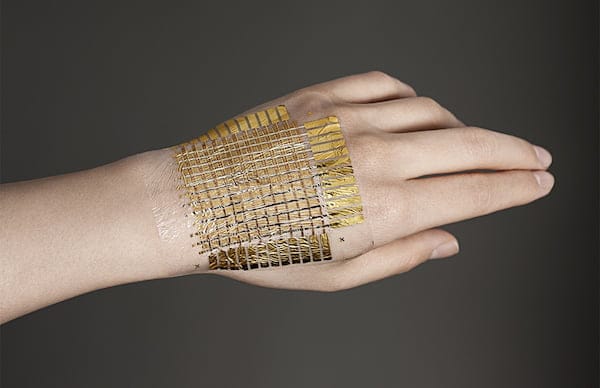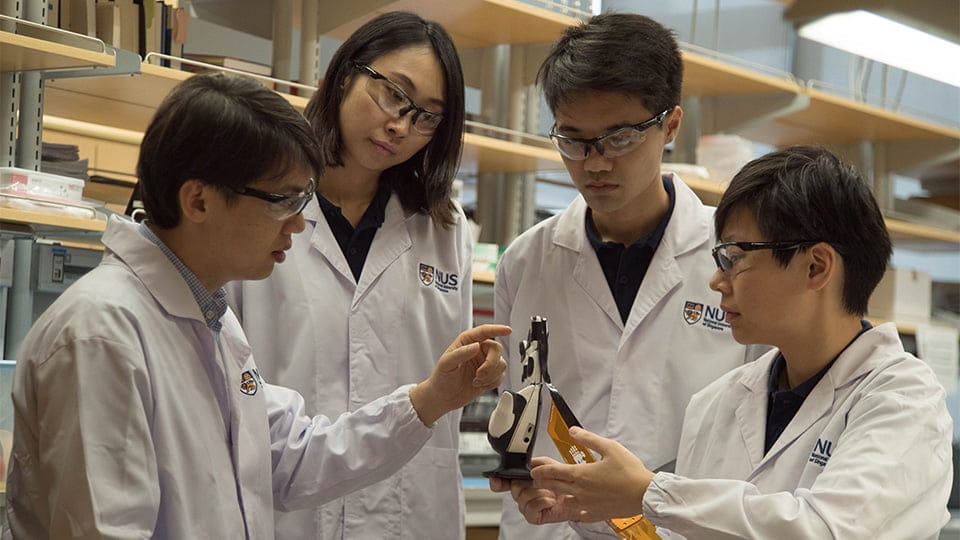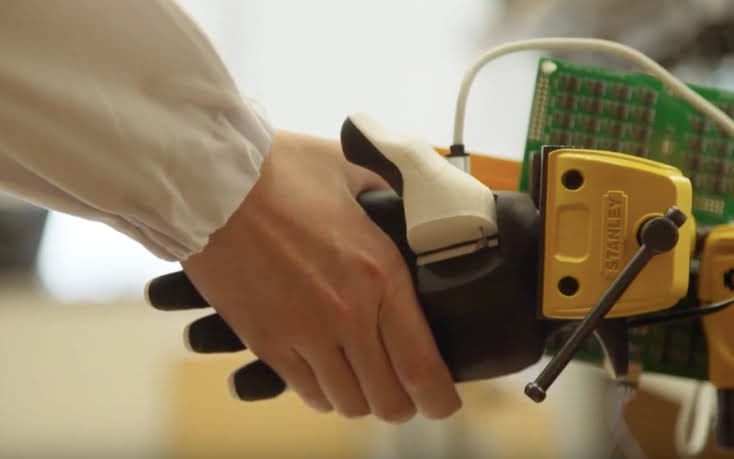Robots and Prosthetics can now Feel
How E-Skin can give Robots and Prosthetics a Human-like sense of Touch: The Artificial Touch
Imagine a robot that can feel objects as well as, or even better than, a human. Or a prosthetic limb that can restore the sense of touch for an amputee. Yes! It is real scenarios not fictional, becoming possible thanks to Artificial Intelligence and Advanced technologies in the Electronic Skin researches.
The future of wearable tech isn’t in your watch or glasses – it’s literally on your skin. Electronic skin, or e-skin, is changing how we think about wearables, prosthetics, and even our own bodies. Let’s take a deeper look at this cutting-edge technology.
What exactly is e-skin?
E-skin mimics the abilities of real skin, except it’s packed with technology. It’s a thin, flexible layer of electronics designed to seamlessly integrate with our bodies. E-skin contains tiny sensors that can detect:
- Touch: Imagine your clothing adjusting to weather changes or a game controller that perfectly feels your grip.
- Temperature: A “smart bandage” that alerts doctors to an oncoming infection by monitoring a wound’s temperature.
- Heart rate, blood pressure, and more: Real-time, personal health tracking without those bulky wearable devices.
What’s new and exciting?

Here’s where e-skin advances take a futuristic turn:
- Self-healing capabilities: Much like our skin, some e-skins can repair minor cuts and tears, ensuring non-stop functionality.
- Enhanced prosthetics: E-skins can transmit sensations from prosthetic limbs back to the wearer, leading to a much more natural, intuitive sense of control.
- Personalized medicine: Picture an e-skin patch that not only monitors vital signs but releases perfectly calibrated medicine doses based on those readings.
- Biodegradable e-skin: Imagine temporary medical e-skins that monitor healing, then safely dissolve as a wound improves, reducing medical waste.
What is the Potential of Artificial Touch?
The implications of artificial touch are broad and transformative:
- Robotics: Robots equipped with artificial touch will gain enhanced dexterity, allowing them to perform delicate tasks, navigate complex environments, and work safely alongside humans.
- Prosthetics: People with prosthetic limbs will be able to regain a sense of touch, providing greater control over their artificial limbs and a deeper connection to the world around them.
- Virtual Reality (VR) and Gaming: Haptic feedback incorporated into VR and gaming experiences will blur the lines between the virtual and the real, leading to unparalleled immersion.
- Medical Training: Surgical simulators that provide realistic tactile sensations will revolutionize medical training, giving surgeons lifelike practice before working on real patients.
Who are the big players working on E-Skin?
Universities and tech companies worldwide are pouring resources into e-skin development. Here are some key projects to watch:
The National University of Singapore is at the forefront, with projects addressing critical challenges like self-healing materials and underwater functioning. NUS advances pave the way for reliable, long-term use even in demanding medical contexts.
- Stanford University: Their team is leading breakthroughs in sensitive, stretchable e-skins, pushing the boundaries of prosthetic control.
- University of Tokyo: Researchers are focused on the self-healing properties of e-skins, making them ideal for long-term use.
Meet ACES
The Shape-Shifting Skin Sensing the Future of Healthcare

ACES (Asynchronous Coded Electronic Skin) is an artificial nervous system developed by a team of researchers from the National University of Singapore (NUS). It consists of a network of sensors connected by a single electrical conductor, which can detect signals like the human sensory nervous system. Unlike existing electronic skins, which have interlinked wiring systems that are prone to damage and difficult to scale up, ACES is more robust and responsive.
How does ACES work?
Each sensor in the ACES network can generate a unique electrical pulse when it is touched. The pulse is then transmitted through the conductor to a chip, which can decode the signals and identify the location and type of touch. The chip can also be integrated with any kind of sensor skin layers, such as those that can sense temperature, pressure, humidity, or light.
What are the benefits of ACES?
- Ultra-high responsiveness: is One of the main advantages of ACES. It can detect touches more than 1,000 times faster than the human sensory nervous system, and differentiate physical contact between different sensors in less than 60 nanoseconds. This means that ACES can accurately identify the shape, texture, and hardness of objects within 10 milliseconds, which is ten times faster than the blinking of an eye.
- Robustness to damage: is another benefit of ACES. Since the sensors are not interconnected, the ACES network can continue to function even when some sensors are damaged or removed. This makes it more durable and reliable than conventional electronic skins.
What are the applications of ACES?
- Human-like sense of touch: ACES has a wide range of potential applications in robotics and prosthetics. For example, it can be used to give robots a human-like sense of touch, which can enhance their performance and interaction with humans. Robots equipped with ACES can perform tasks that require fine manipulation, such as surgery, or handle objects that are delicate, slippery, or dangerous.
- Improve the quality of life: ACES can also be used to improve the quality of life for people who have lost their limbs or sense of touch. By attaching ACES to prosthetic devices, amputees can regain the ability to feel and control their artificial limbs.
- Seamless Health Monitor: ACES can also provide feedback on the temperature, pressure, and pain levels of the prosthetic limbs, which can prevent injuries and infections. Yet, the feedback is not only sent to the patch holder, but acts as a Long-term monitor accessible from anywhere, specifically the doctor or the clinic following the patient’s case.
ACES is a revolutionary technology that can mimic and surpass the human sense of touch. It has the potential to transform the fields of robotics and prosthetics, as well as other domains that require tactile sensing.
What are the Challenges and Considerations for Artificial Touch and E-Skin future?

Medical e-skin promises radical advances in personalized care, wound management, and prosthetics. However, researchers still need to solve several issues:
- Power: How do we power such sophisticated, always-on devices unobtrusively?
- Data privacy: Continuous health monitoring raises significant privacy concerns that must be addressed thoroughly.
- Data security: Such intimate health data necessitates top-tier protection from misuse.
- Comfort: For widespread adoption, e-skin has to feel as natural as a second skin.
- Biocompatibility: Materials used must be perfectly safe for long periods in contact with the body.
- Accessibility: Making e-skin affordable is crucial so its benefits reach everyone.
The revolution powered by medical e-skin is approaching quickly. Soon, your doctor might prescribe not just medicine, but a futuristic second skin capable of monitoring, optimizing, and even protecting your health in unprecedented ways.
Electronic Skin is an example of how science fiction can inspire real-world innovations that can benefit humanity.






